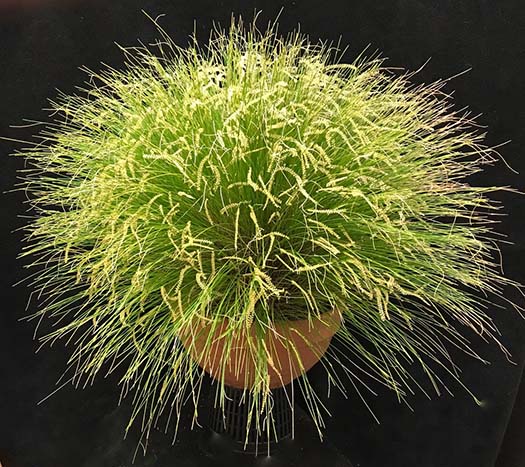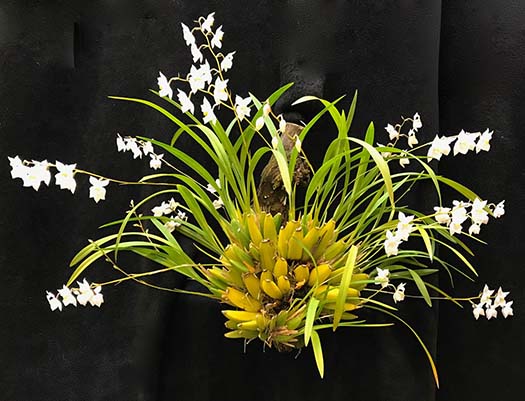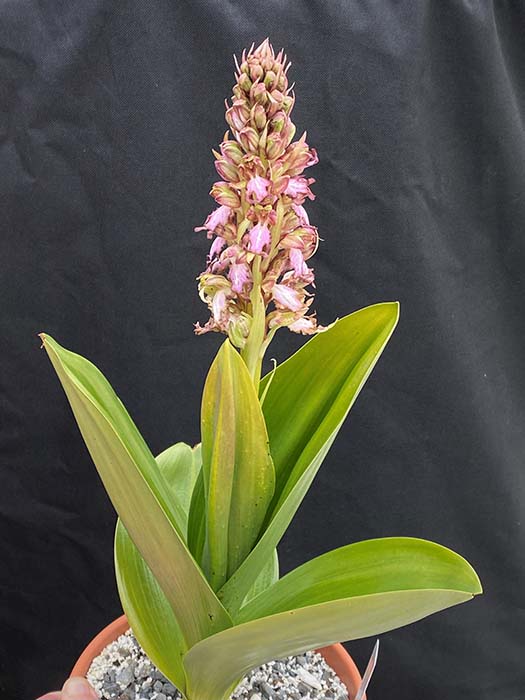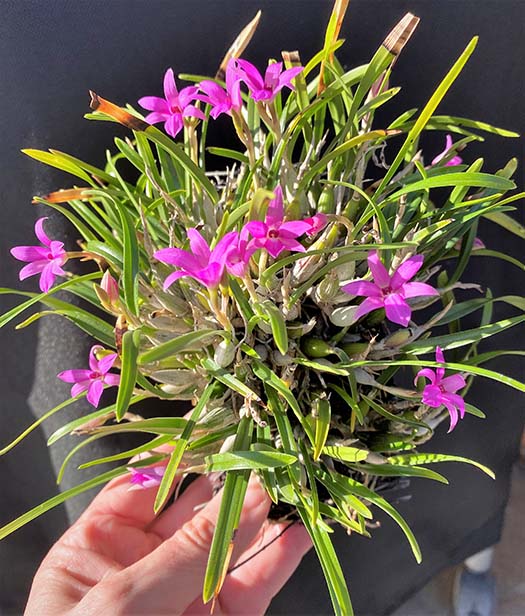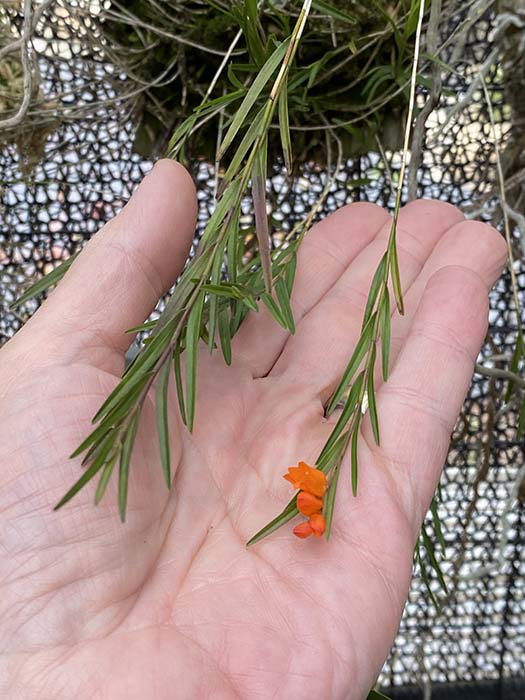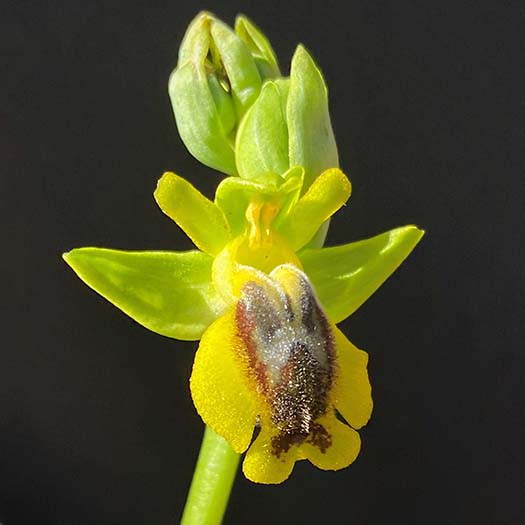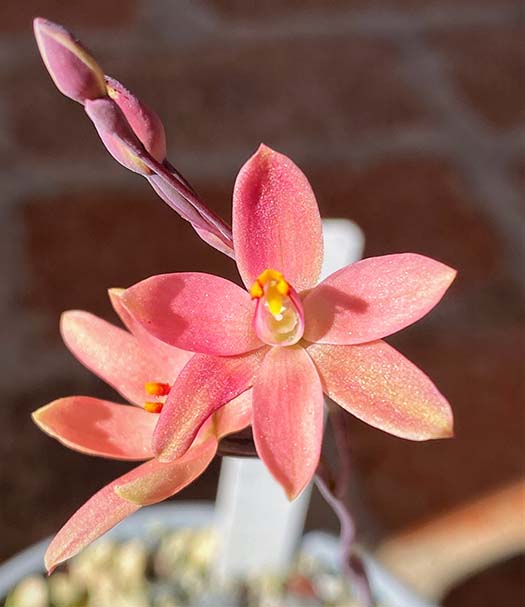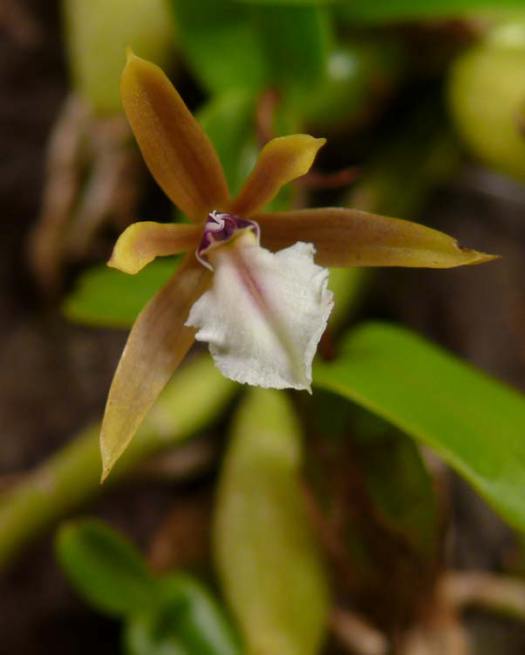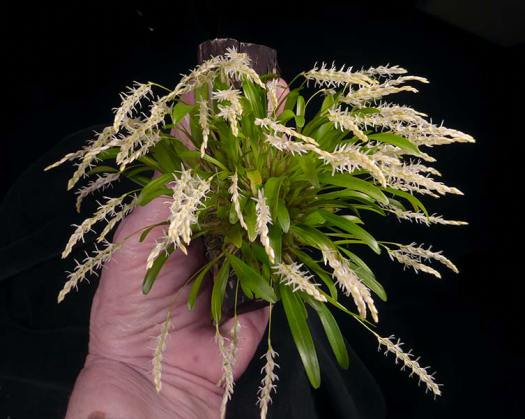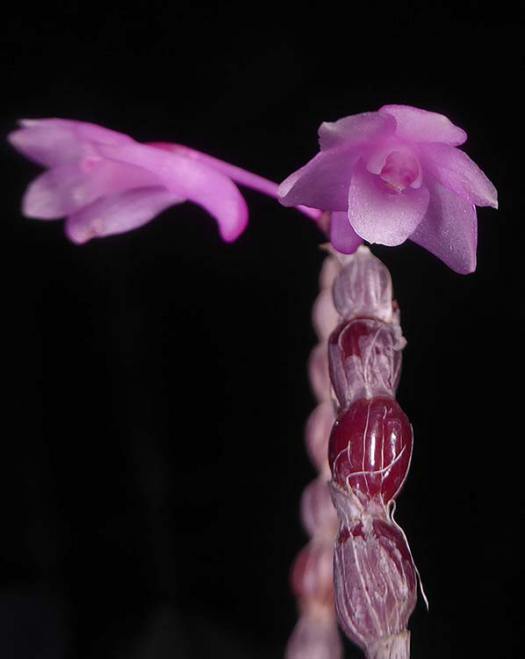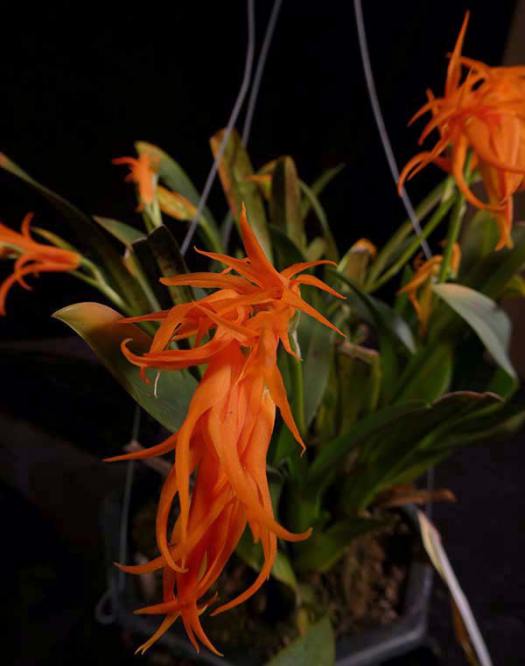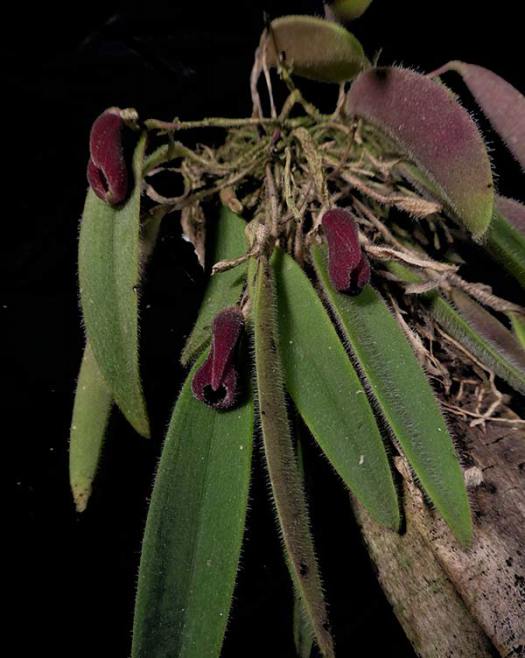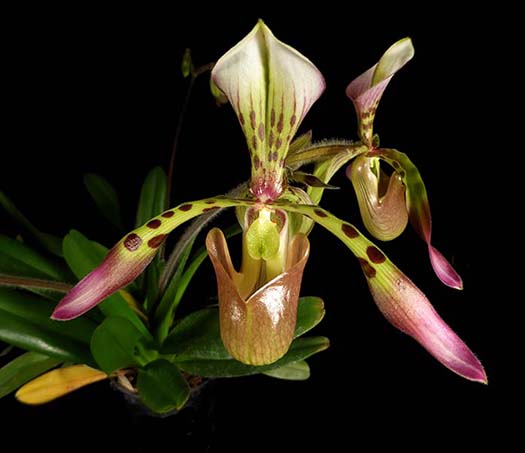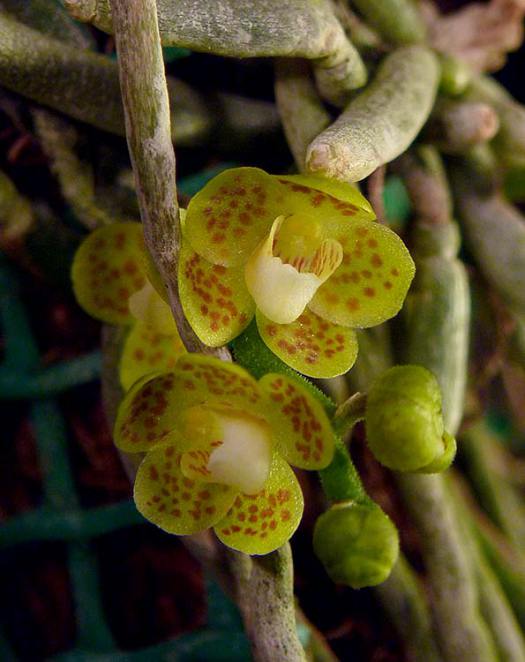March 2021
From Lynn Wiand:All orchids grown outdoors, coastal southern California |
|
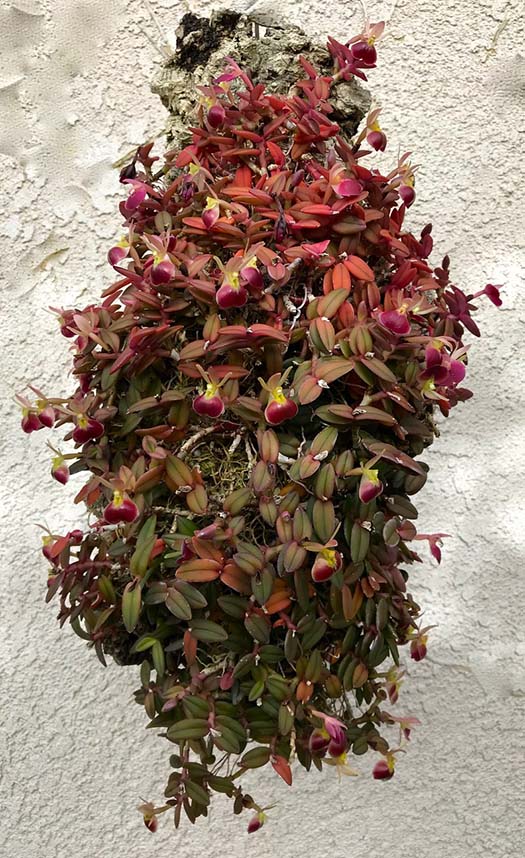 |
Epidendrum porpax 'Corona del Mar'
This was a tiny division in 1998, now occupies a 24 inch piece of cork. 2 years ago the 4” wood slat basket that was hidden inside the large ball of plant that had surrounded the basket…the wood had rotted away and the plant fell…that is why it is so spaced out. …I remounted it onto the cork and it is slowly filling back in |
From Scott McGregor:All orchids grown outdoors, coastal southern California |
|
Himantoglossum robertianumHimantoglossum robertianum, also known as the “Giant Orchid”, is widespread in the Mediterranean region. It grows during the winter, flowers early spring and is dormant in the hot/dry summers. The flower spike is just beginning to open. The flowers aren’t the most attractive of the European terrestrials, but at least they are nicely fragrant. I grow this outside in full sun, and it is my first Mediterranean terrestrial to bloom this year. |
|
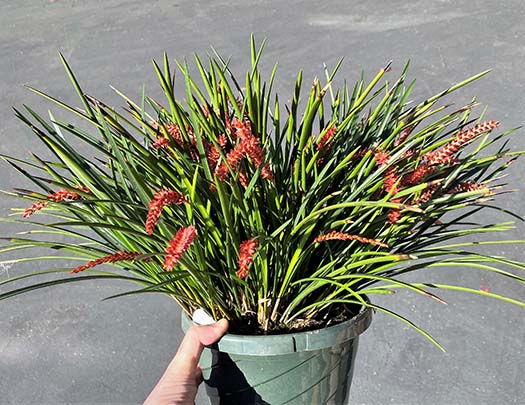
Dendrochilum wenzelii 'Red Sails'Colorful red flowers, easy grower, reliable bloomer, attractive plant when not in bloom—what’s not to like about a big pot of Dendrochilum wenzelii! |
|
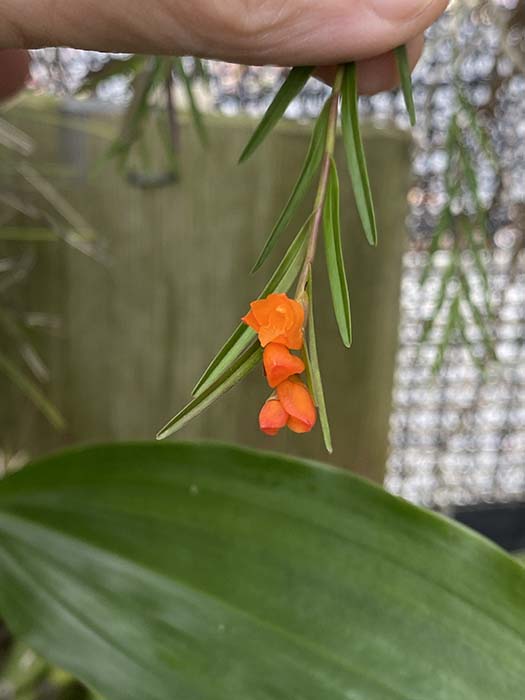 |
|
Isochilus aurantiacusHere’s a species I struggle with and am delighted to get a small bloom now after a few good years and then five years of the plant malingering and flowerless. In the last year I’ve given it much more light and water—seems that’s what it wants. Hard to beat the fully saturated orange color! |
|
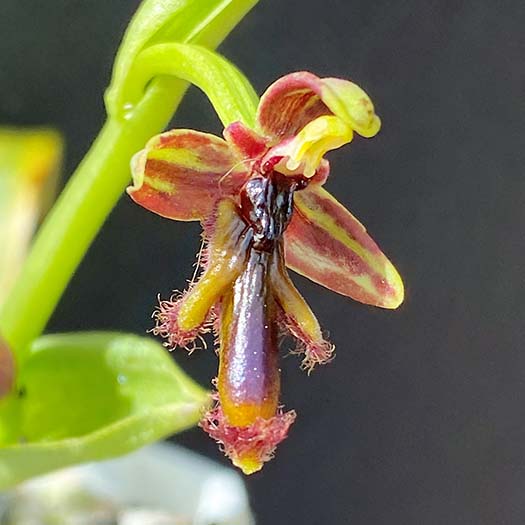
Ophrys regis-ferdinandiiMy first Ophrys to bloom this season— definitely looks like a bug! |
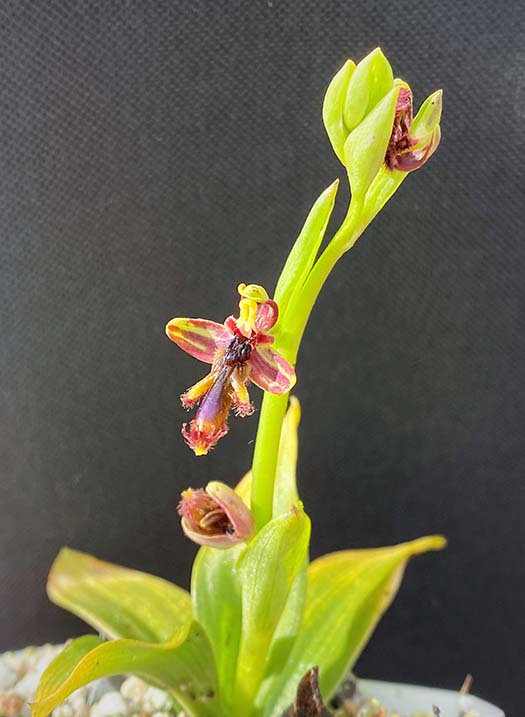 |
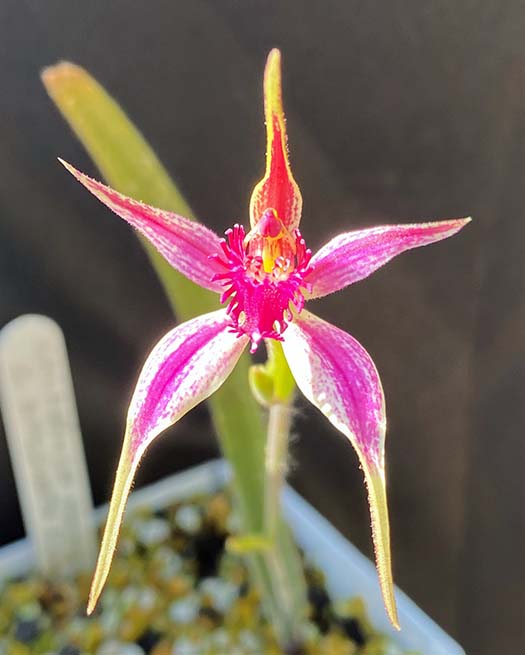 |
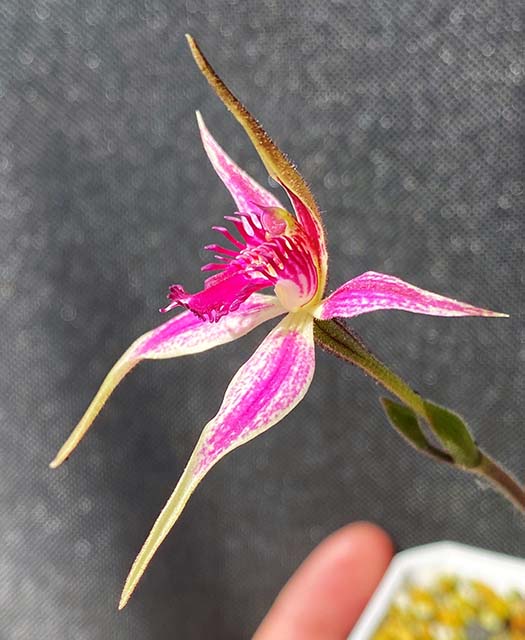 |
Caladenia Harlequin x applanata ssp. erubescens Caladenia Harlequin (flava X latifolia) x applanata ssp. erubescens, from Australia, grown outside in full sun December-March, summer dormant/dry. Not species, but any Caladenia is unusual and rare to see! |
|
From Roberta Fox:
|
|
Outside in the Back Yard: |
|
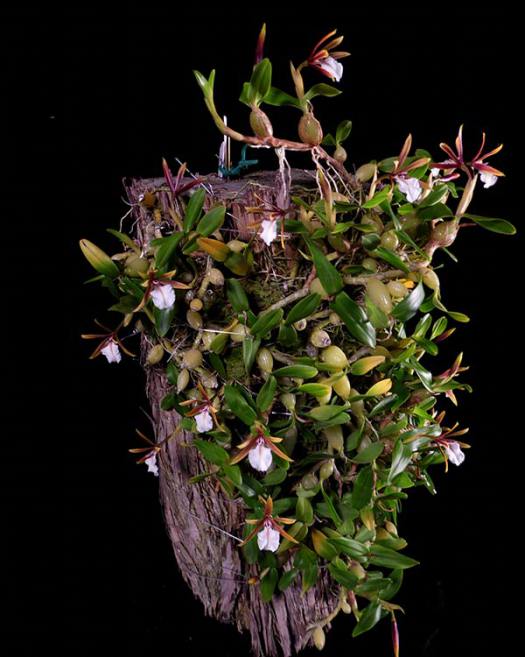 |
|
Dinema polybulbonNative to a wide area from southern Mexico through Central America. It rambles, forming a mat. The flowers are quite fragrant. After its prior mount disintegrated, I put it on this piece of bottlebrush wood abut two years ago, and it has grown enthusiastically since then. |
|
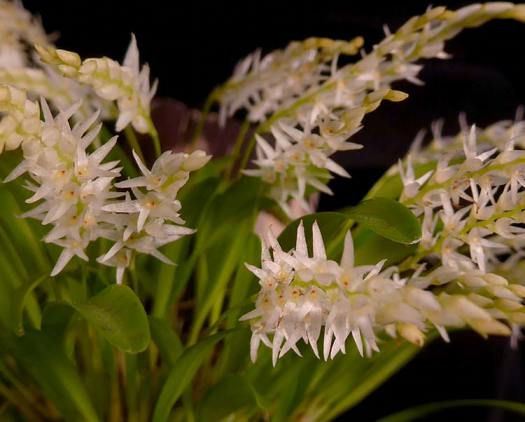 |
|
Dendrochilum parvulumLots of flower power in a small package. I lost count of the number of spikes. It is a very consistent bloomer this time of year. |
|
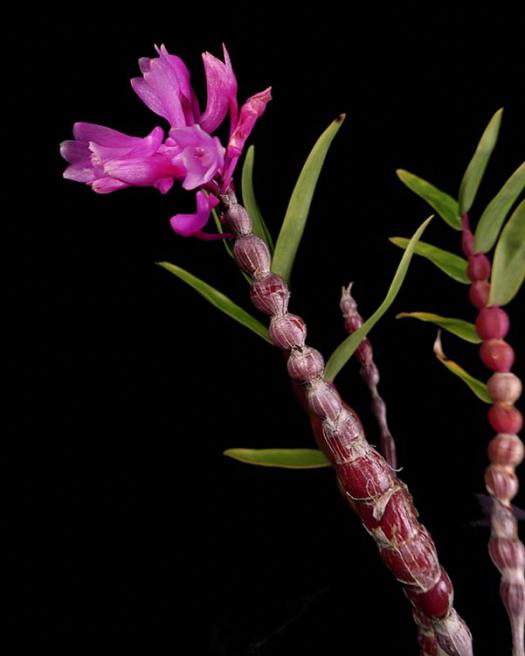 |
|
Dendrobium rindjanienseNative to Lobok Island in Indonesia. I can't find much information about it other than being a cool-growing species from fairly high elevations. (Mt Rindjani) The bumpy canes are inriguing. Flowers emerge from the tip of older canes. It grows in a 4 inch plastic basket with loosly-packed sphagnum, so it dries quickly. |
|
Brassia (Ada) aurantiacaThis just keeps getting better, 13 spikes this year. Flowers last 6-8 weeks. |
|
Campanulorchis globiferaNative to Vietnam, it is related to Eria. The buds (and back side of flowers) are wooly. I do love fuzzy orchids. |
|
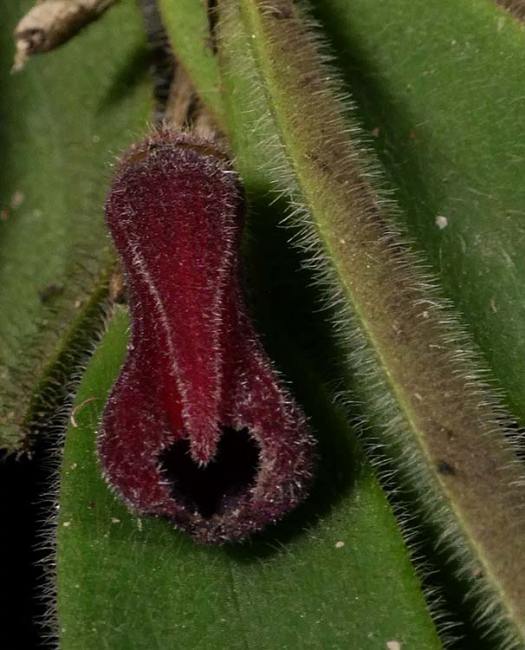 |
|
Dresslerella caesariataAnother fuzzy orchid... A flower only a mother could love. But cute. This Pleurothallid is native to Ecuador. |
|
Diuis magnificaMediterranean-climate terrestrials are starting to put on a show. This one is from western Australia. Like all of this type of orchid, it is dormant and dry from around May to October. Watered well through the winter, they greet the coming of spring. |
Diuris orientisAnother "donkey orchid," this one from southern and eastern Australia. |
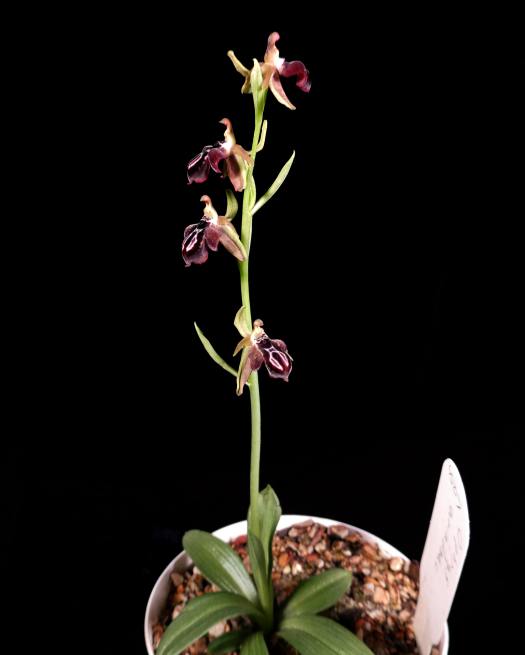 |
|
Ophrys cretica var. ariadneMediterranean terrestrial, this one from the Greek islands. One of the "bee orchids". A great year for this group, just getting started. |
|
Ophrys fuscaFrom a wide area of southern Europe, northern Africa, and Turkey. This one was a "bonus" - I ordred several tubers of a Serapias, and it was obvious that this one wasn't. Ron Parsons graciously provide me with the ID. |
Ophrys iricolor |
Ophrys tenthrediniferaOne of my favorites among the "bee orchids", with dramatic colors. |
Pterostylis curtaFrom Australia. Not as tall or dense as some bloomings. This year the flowers are emerging over a longer period of time so that some have finished while others are starting. A longer bloom period but not as spectacular as some of the flush blooms that I have had. But, still a delight. I love the way that these multiply. |
Cattleya (Laelia) lundiiA charming Brazilian species. |
|
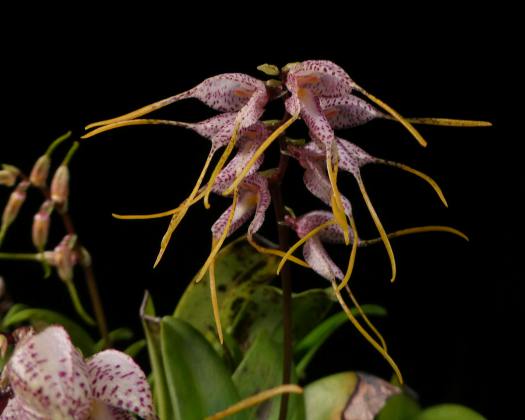 |
|
Masdevallia polystictaWhere many Masdevallias are marginal with our warm summers, this one is easy to grow and very prolific. |
|
Restrepia sanguineaFlowers are large for the genus. Scott showed one last month that was spotted. This one has subtle stripes but the first impression is the saturated color. It only blooms once a year, but produces multiple flowers over a period of 4-6 weeks. |
|
 |
Angraecum sesquipedaleThis Madagascan native is marginal for outdoor growing. The species is native to the coastal lowlands of eastern Madagascar, definitely tropical. However, the plant seems to do fine with our winter chill. I have lost buds, though, to badly-timed cold nights so when it was in spike I brought it inside, and was rewarded with these flowers. |
In the greenhouse... |
|
Dendrobium ancepsI was hoping for a flush bloom, but it opens flowers a few at a time. Individual flowers don't last long but there are lots of buds - the best performance that I have seen so far. Baker indicates that it can tolerate cool temperatures, it comes from a wide range of elevations... it is gettiing rather large for the greenhouse, I think that it will move outside as soon as nights get a bit warmer, so it will have lots of time to acclimate before cold weather returns. |
|
Phalaenopsis schillerianaAlong with lovely, delicate flowers it has attractive mottled leaves. Some cultivars are fragrant but I haven't noticed any on this one. |
|
